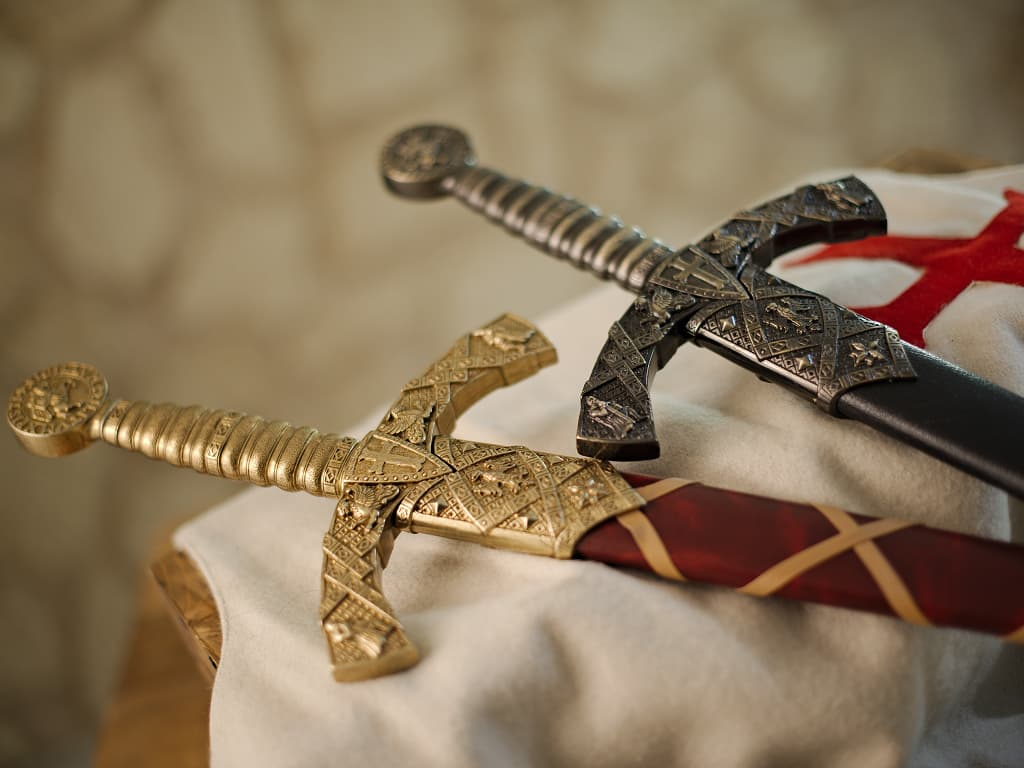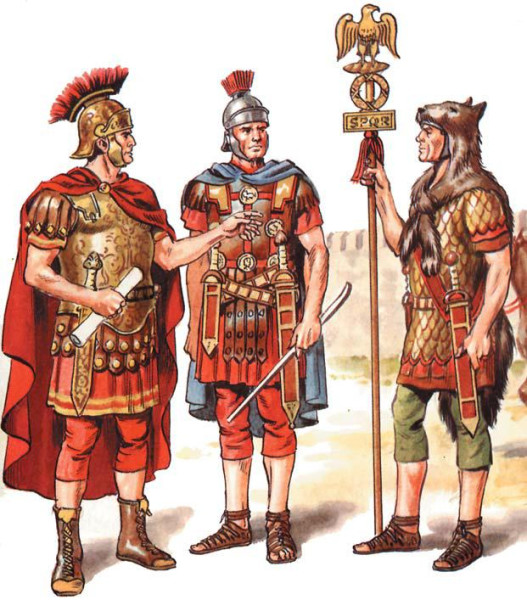The dagger, a short, double-edged weapon, has been part of the European arsenal since ancient times.
Although initially associated with hand-to-hand combat, over the centuries it also adopted ceremonial, utilitarian and symbolic functions.
This article explores the main types of daggers in Europe from the Middle Ages to the present day, highlighting their characteristics, uses, and evolution, with documented examples in museums and historical collections.
Medieval daggers (9th–15th centuries)
During the Middle Ages, daggers were common secondary weapons among soldiers, knights, and nobles.
Among the best-known models are:

Bollock dagger
Widely used in England and Scotland between the 13th and 15th centuries.
It received its name from the protuberances on the handle, which resembled male genitals.
Specimens are preserved in the British Museum and the Wallace Collection (London).
(Photo of the Bollocks Dagger - 45 cm )

Rondel dagger
Long, narrow blade with circular guards.
Popular in the 14th and 15th centuries, and ideal for penetrating armor joints.
Originals can be seen at the Musée de l'Armée (Paris) and the Kunsthistorisches Museum (Vienna).
(Photo of the Handmade Rondel Dagger - Wooden Handle and Scabbard )
Renaissance and Golden Age daggers
(16th–17th centuries)
With the rise of dueling and fencing, specialized daggers were born as accompaniments to the sword.
Among them we can find the following:

Main gauche
“Left hand” in French.
This dagger was used in the non-dominant hand to deflect attacks or catch the opponent's blade.
It stands out for its elaborate guard.
Historical pieces are found in the Royal Armory Museum in Madrid .
(Photo of Gustav II Main Gauche, Left-Handed Dagger )
Italian parry daggers
In Renaissance duels, especially in Italy, daggers with elaborate guards, often decorated with mythological or floral motifs, were common.
Hunting and civilian daggers (17th–19th centuries)
With the end of medieval warfare, daggers began to have more symbolic or utilitarian uses.
We find thus:

Hunting daggers
Also called hunting dagger or Hirschfänger in German, it was used to finish off prey in noble hunts.
Common in Germany, Austria and France.
Ornate examples are in the Germanisches Nationalmuseum (Nuremberg).

Courtship Daggers
In Spain and Italy, it was common for nobles to carry richly decorated daggers as part of their daily attire.
(Photo of the Decorative Medieval Dagger with sheath 15780 )
Modern military daggers (19th–20th centuries)
During the 19th and 20th centuries, daggers returned to arsenals, now as symbols of corps, honor, or rank.
Some examples might be:
German officer's dagger (WWII)

The Waffen-SS and the Luftwaffe used daggers as part of their uniform.
These weapons were more symbolic than functional, and many were crafted by makers such as Carl Eickhorn.
Examples are preserved in the Imperial War Museum (London).
(Photo of the Dagger of the SS Schutzstaffel 4035 )

Fairbairn–Sykes fighting knife
Developed in 1941 by the British for special operations, this dagger became the emblem of the SAS and other elite units.
It is characterized by its thin and balanced blade.
It is still in use in modern versions.
(Photo of the Fairbairn-Sykes Command Knife )
Contemporary and tactical daggers (20th–21st centuries)
Today, daggers continue to be manufactured for military, tactical, ceremonial and collector's uses:

Modern tactical daggers
Brands such as Extrema Ratio (Italy) or Böker (Germany) produce functional daggers for special forces or police forces.
(Photo of the Fixed Knife 39-09 Operative, Extrema Ratio )

Ceremonial daggers
Many European armed forces retain the dagger as part of their full dress uniform, such as the Spanish Legion or the British Royal Guard Dragoons.
Other groups also use daggers for their important meetings, such as the Freemasons.
(Photo of theMasonic Dagger 10755 )
A tool that has transcended by adapting to the centuries
The history of the dagger in Europe reflects its versatility as a tool, weapon, and symbol.
From medieval combat to contemporary special forces, the dagger has accompanied humans from the battlefield to the ceremonial hall.
Understanding its evolution allows us to better understand the transformation of the art of war, fashion, and symbolism in European society over the centuries.









